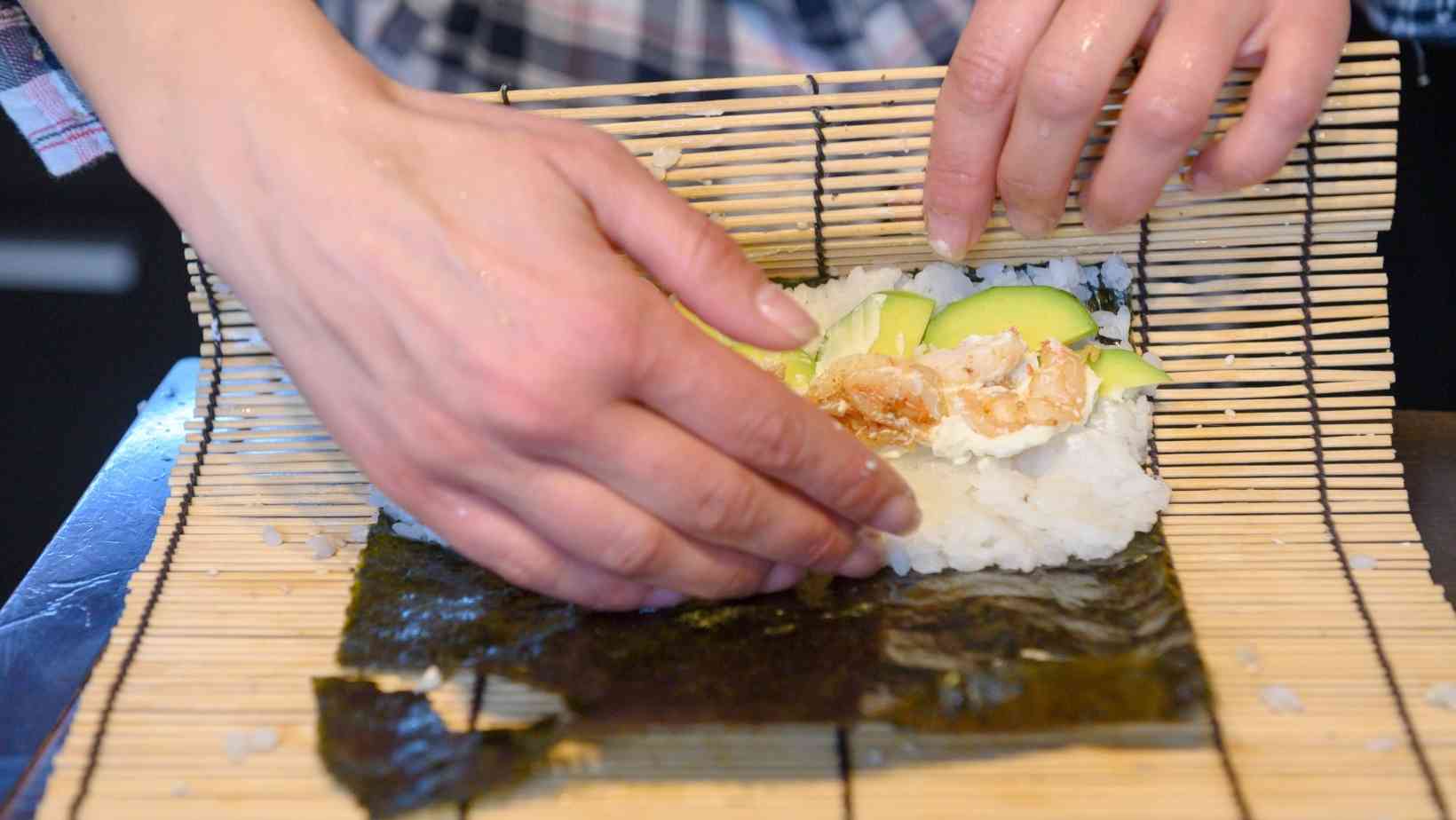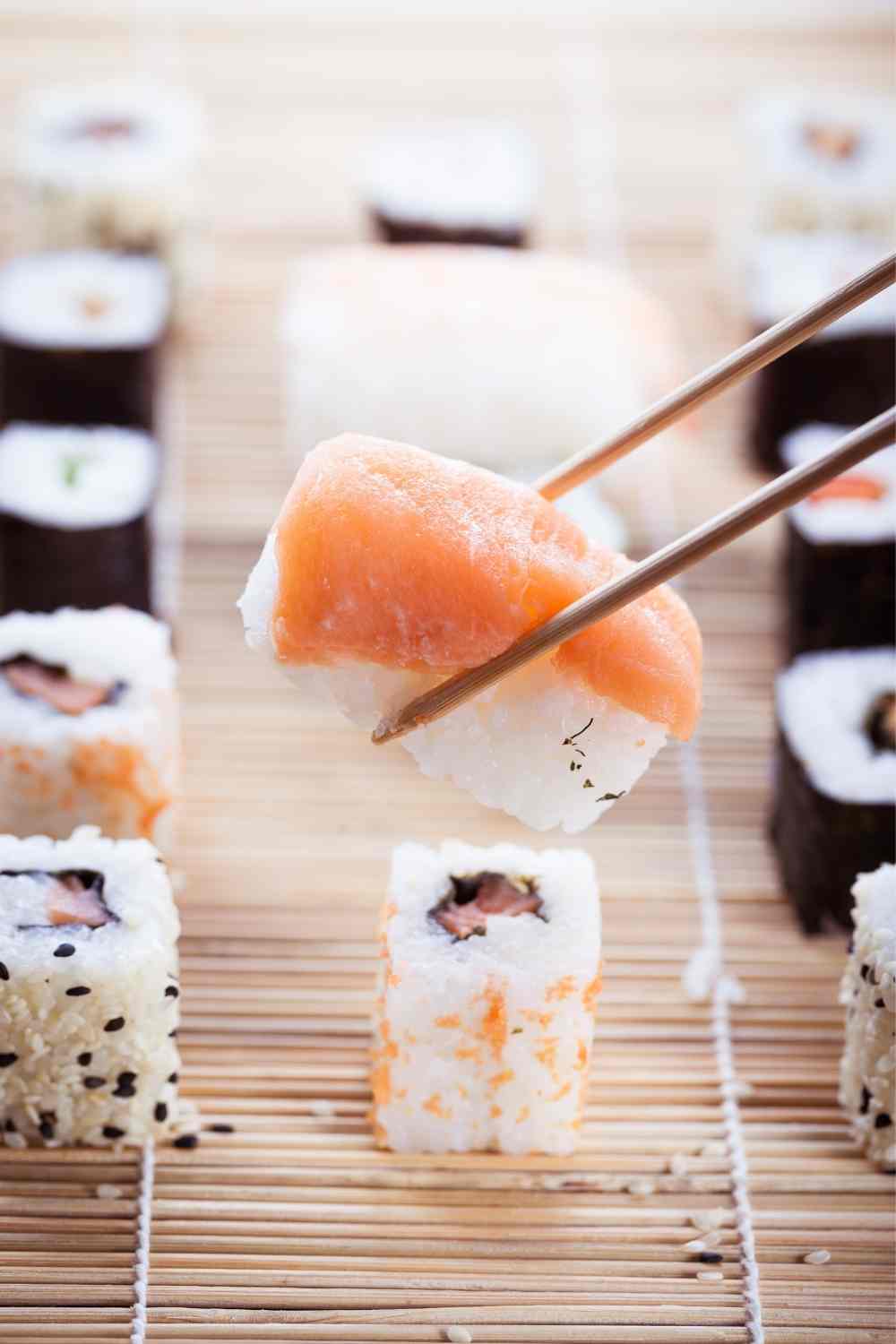Although you won't get thrown out of a typical Japanese restaurant for mistreating your fish, learning how to eat sushi properly may make the experience much better. You can make your next sushi meal a cultural experience! Sushi isn't a cheap pastime, so why not have some fun while learning something new?
To perfect the art of preparing those delectable bites, serious sushi chefs study for decades. Respect for years of labor may be shown by following some basic sushi etiquette and properly appreciating their accomplishments. What was previously thought of as quick food has grown into a gourmet art form that is adored all over the globe?

Disclaimer: The following suggestions are only for a true sushi experience at a genuine Japanese restaurant, not for any establishment that also serves pizza and General Tso's chicken.
Getting to Know the Chef
First and foremost, if you want to take the experience seriously, you should sit at the counter. Put yourself in the spotlight. You should only speak to your sushi chef when absolutely necessary, and you should always ask what he suggests. He most likely hand-picked fish from the market understands what looked excellent that day, and will treat you with extra special attention if you put your faith in him. Grabbing a menu and picking anything at random demonstrates that you aren't interested in his views. Even if you don't follow his advice, your curiosity about what's going on behind the scenes will be valued.
That said, never distract the chef later with questions or small talk pertaining to the food, weather, or Japanese customs. Allow the chefs to work; they are artists with sharp knives.
You may even offer to buy the cook a shot of sake if the dinner turns out to be an outstanding experience. You should have one with him if he accepts. Never give the chef money, even a tip; they deal with raw fish all day and should never handle cash. Furthermore, tipping is uncommon in Japanese culture and must be done with caution.
The true (Japanese) pronunciation of sake is "sah-keh," not "sah-key."
Before the session starts, you may be led to talk with a concierge at a formal sushi restaurant. This means that if the chef does not speak English, you will have the chance to express any preferences or allergies you may have. To minimize any possible embarrassment for either side, your demands should be relayed to the chef through the assistant.
Preparing to Eat Sushi
The moist towel is for wiping your hands before eating, mostly since maki and nigiri sushi is traditionally eaten with the fingers (which is probably what you're accustomed to seeing). Clean your fingers with the towel, then set it away; do not use it to freshen up your face!
Only a little quantity of soy sauce should be added to the bowl. If you need more, you may easily add more later. In Japanese eating etiquette, wasting soy sauce is frowned upon. Pouring out too much also indicates that you think the fish is ancient and will need a lot of "doctoring" before you taste it.
When eating sashimi—raw fish slices without rice—follow basic etiquette on how to handle chopsticks respectfully. You won't even need chopsticks if you're exclusively eating nigiri sushi.
Don't put any wasabi in your soy sauce dish! Although this is a typical habit in the West, dipping sushi into this muck is not the ideal way to eat sushi. If rice falls into your soy sauce dish, don't pick at it with your chopsticks, and don't lick the sauce off the ends of your sticks.
When not in use, place your chopsticks on the holder next to your plate, neatly folded and parallel to the table, rather than on the plate or in the dipping bowl. Leaving your chopsticks anyplace else might mean you've completed your meal! It is courteous and customary to place your chopsticks between slices of sashimi.
Sushi Using Wasabi and Ginger
Turning your soy sauce into a foggy mess by mixing in wasabi is not the appropriate way to eat sushi, no matter how much you adore the burn. Depending on the kind of fish, the chef will have previously added tiny quantities of wasabi to each piece to bring out the tastes.
Adding too much wasabi in front of the chef not only masks the natural flavor of the fish he meticulously chose, but it is also irritating. It's the equivalent of putting ketchup all over a top cut of meat in front of the guy who cooked it to perfection for you in a high-end restaurant!

If you need to add wasabi, use a chopstick or a piece of ginger to brush it on the fish. Don't just slap some ginger on top of your sushi as a garnish! It's also poor manners to eat the excess wasabi off your chopsticks. In the West, chopsticks are treated similarly to a fork: Sucking on your utensils or pointing with them isn't a smart idea.
Fresh ginger is supplied to help cleanse your palate between portions, but it should never be consumed with sushi. If you want more ginger, you may always request it.
How to Eat Sushi Correctly
Fortunately, there are no pretensions about which sort of sushi you should eat first or in what sequence you should eat it. The chef may have his own ideas on what should be served in what sequence. Tell the chef how much you like anything he cooked and ask for another slice.
Sashimi (raw fish slices) is traditionally eaten with chopsticks, whereas sushi (rice-based dishes) is traditionally eaten by lifting a piece between your thumb and middle finger. Rather than destroying the sushi with wooden sticks, picking it up with your fingertips enables you to feel the texture and helps keep it intact. You'll be pardoned if you need to use chopsticks in any case.
The most common form of sushi offered is nigiri. Rotate the piece counterclockwise to turn it upside down, then dip just the fish in the soy sauce, avoiding the rice if possible. Not only will too much soy sauce sink into the rice, changing the texture of the bite but leaving rice in your dish is unprofessional. Sushi preparation also includes correctly preparing the vinegared rice.
Sushi pieces with sauce already on top, like unagi (eel), should not be dipped.
To be a true sushi master, insert portions in your mouth upside down, with the fish against your tongue. Before gulping down the mouthful, let your tongue absorb the varied tastes. You should be able to devour the whole chunk in one mouthful if possible. When you try to divide a piece into two bites, it frequently falls apart. When nigiri pieces are too large to consume all at once, another excellent reason to eat with your fingers is to keep everything together.
The final and most crucial rule of sushi eating is to savor every bite—more it's than likely that the bill, not the wasabi, will give you a little heartburn afterward!




